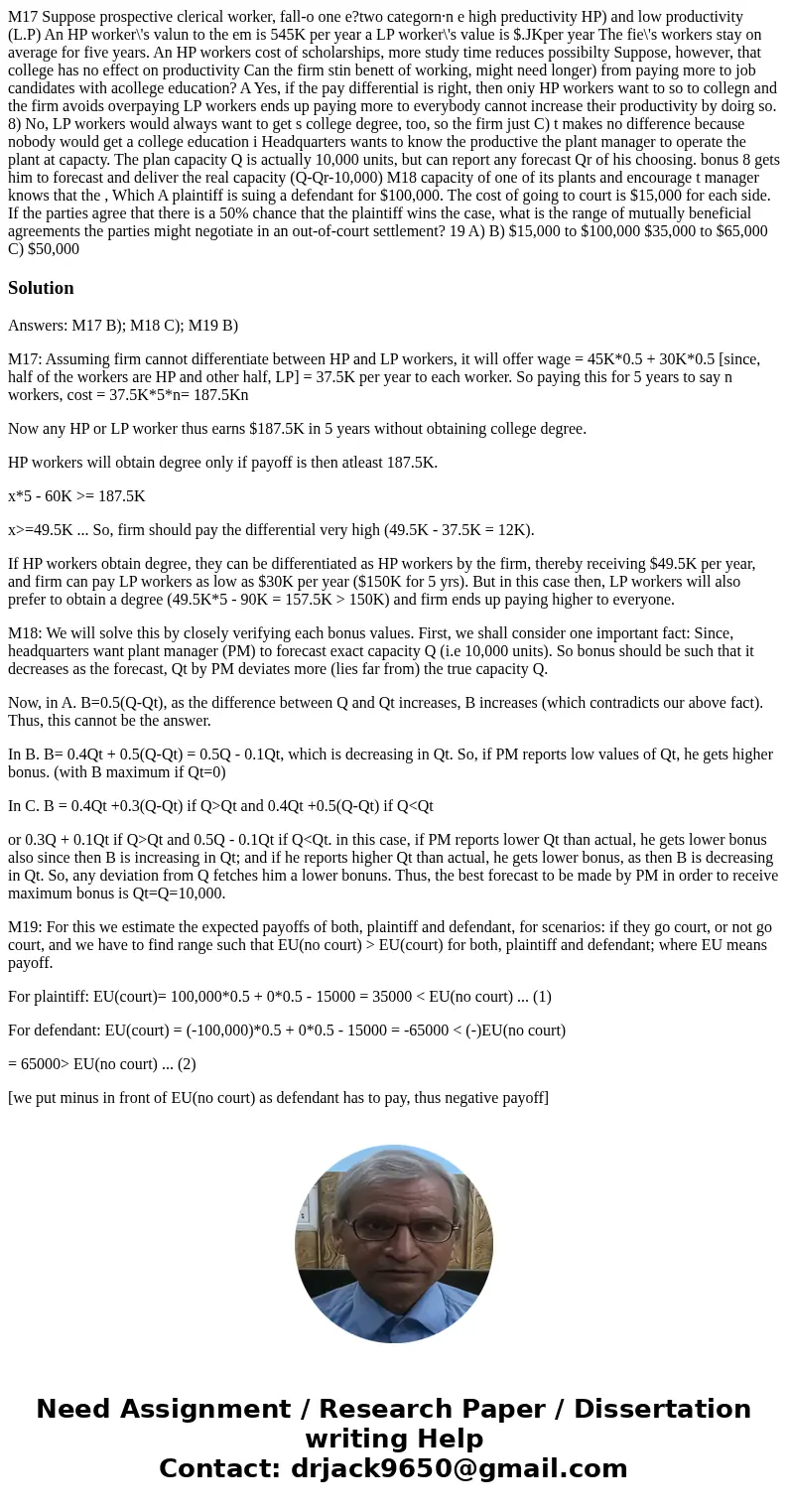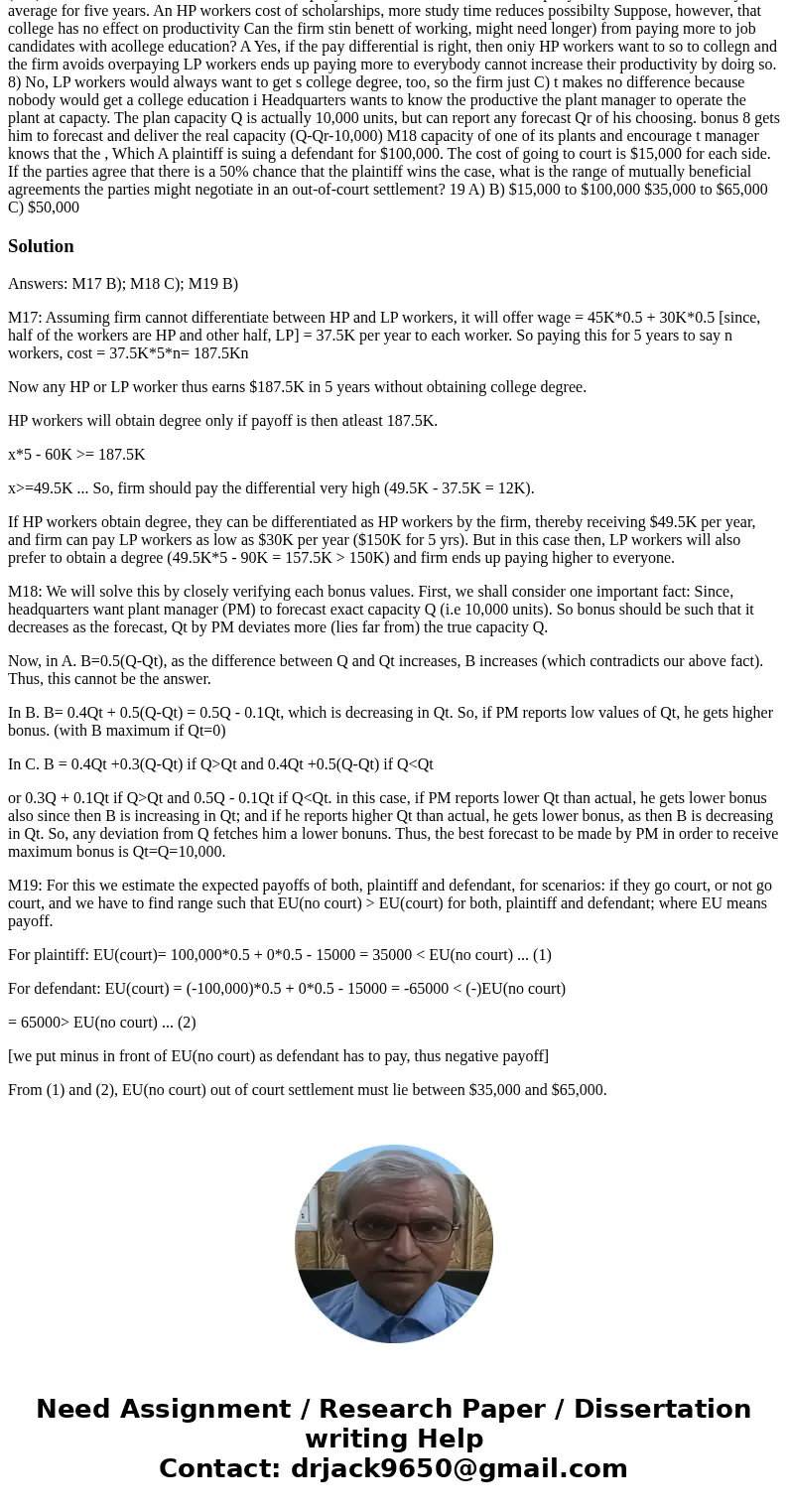M17 Suppose prospective clerical worker fallo one etwo categ
Solution
Answers: M17 B); M18 C); M19 B)
M17: Assuming firm cannot differentiate between HP and LP workers, it will offer wage = 45K*0.5 + 30K*0.5 [since, half of the workers are HP and other half, LP] = 37.5K per year to each worker. So paying this for 5 years to say n workers, cost = 37.5K*5*n= 187.5Kn
Now any HP or LP worker thus earns $187.5K in 5 years without obtaining college degree.
HP workers will obtain degree only if payoff is then atleast 187.5K.
x*5 - 60K >= 187.5K
x>=49.5K ... So, firm should pay the differential very high (49.5K - 37.5K = 12K).
If HP workers obtain degree, they can be differentiated as HP workers by the firm, thereby receiving $49.5K per year, and firm can pay LP workers as low as $30K per year ($150K for 5 yrs). But in this case then, LP workers will also prefer to obtain a degree (49.5K*5 - 90K = 157.5K > 150K) and firm ends up paying higher to everyone.
M18: We will solve this by closely verifying each bonus values. First, we shall consider one important fact: Since, headquarters want plant manager (PM) to forecast exact capacity Q (i.e 10,000 units). So bonus should be such that it decreases as the forecast, Qt by PM deviates more (lies far from) the true capacity Q.
Now, in A. B=0.5(Q-Qt), as the difference between Q and Qt increases, B increases (which contradicts our above fact). Thus, this cannot be the answer.
In B. B= 0.4Qt + 0.5(Q-Qt) = 0.5Q - 0.1Qt, which is decreasing in Qt. So, if PM reports low values of Qt, he gets higher bonus. (with B maximum if Qt=0)
In C. B = 0.4Qt +0.3(Q-Qt) if Q>Qt and 0.4Qt +0.5(Q-Qt) if Q<Qt
or 0.3Q + 0.1Qt if Q>Qt and 0.5Q - 0.1Qt if Q<Qt. in this case, if PM reports lower Qt than actual, he gets lower bonus also since then B is increasing in Qt; and if he reports higher Qt than actual, he gets lower bonus, as then B is decreasing in Qt. So, any deviation from Q fetches him a lower bonuns. Thus, the best forecast to be made by PM in order to receive maximum bonus is Qt=Q=10,000.
M19: For this we estimate the expected payoffs of both, plaintiff and defendant, for scenarios: if they go court, or not go court, and we have to find range such that EU(no court) > EU(court) for both, plaintiff and defendant; where EU means payoff.
For plaintiff: EU(court)= 100,000*0.5 + 0*0.5 - 15000 = 35000 < EU(no court) ... (1)
For defendant: EU(court) = (-100,000)*0.5 + 0*0.5 - 15000 = -65000 < (-)EU(no court)
= 65000> EU(no court) ... (2)
[we put minus in front of EU(no court) as defendant has to pay, thus negative payoff]
From (1) and (2), EU(no court) out of court settlement must lie between $35,000 and $65,000.


 Homework Sourse
Homework Sourse